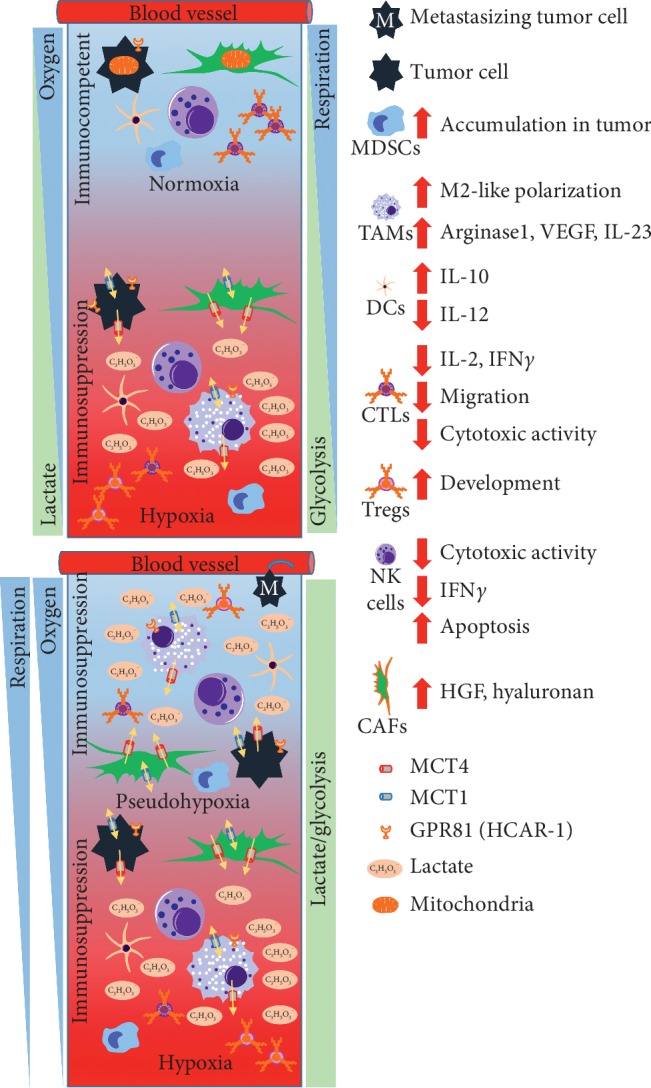Figure 1.

Different oxygen conditions determine the direction of the immune response in the tumor microenvironment. With increasing distance of tumor cells from blood vessels, the oxygen concentration drops. The tumor is not able to respire but instead uses primarily glycolysis for energy production with concomitant production of lactate, which in turn generates an immunosuppressive microenvironment that promotes tumor growth and metastasis (upper panel). Genetic alterations and high levels of lactate causing HIF-1α stabilization are responsible for the glycolytic switch. Tumors use glycolysis even if sufficient oxygen for respiration is present and express hypoxia-related genes and proteins, a state referred to as pseudohypoxia (lower panel). Mitochondria are not shown under hypoxic conditions. This represents a deficiency of OXPHOS, which can be caused by several mechanisms and not just loss of mitochondria. Cellular lactate transport is mainly executed by MCT1 (influx/efflux) and MCT4 (efflux). GPR81 is a G-protein-coupled receptor which senses extracellular levels of lactate. Increased extracellular lactate levels promote escape from immune surveillance of cancer cells, mostly through decreased cytotoxic activity of CTLs and NK cells. Furthermore, lactate induces the accumulation of MDSCs and promotes M2-like polarization and the development of tolerogenic DCs and Tregs. Secreted lactate also not only drives CAFs to produce hepatocyte growth factor, which can attenuate the activity of DCs and CTLs and promote the induction of Tregs, but also increases hyaluronan, which has been associated with cancer progression. Arrows pointing upwards indicate an increase and arrows pointing downwards a decrease. MDSCs: myeloid-derived suppressor cells; TAMs: tumor-associated macrophages; DCs: dendritic cells; CTLs: cytotoxic T lymphocytes; Tregs: regulatory T cells; NK cells: natural killer cells: CAFs: cancer-associated fibroblasts; MCT4: monocarboxylate transporter 4; MCT1: monocarboxylate transporter 1; GPR81: G-protein-coupled receptor 81; HGF: hepatocyte growth factor; VEGF: vascular endothelial growth factor.
